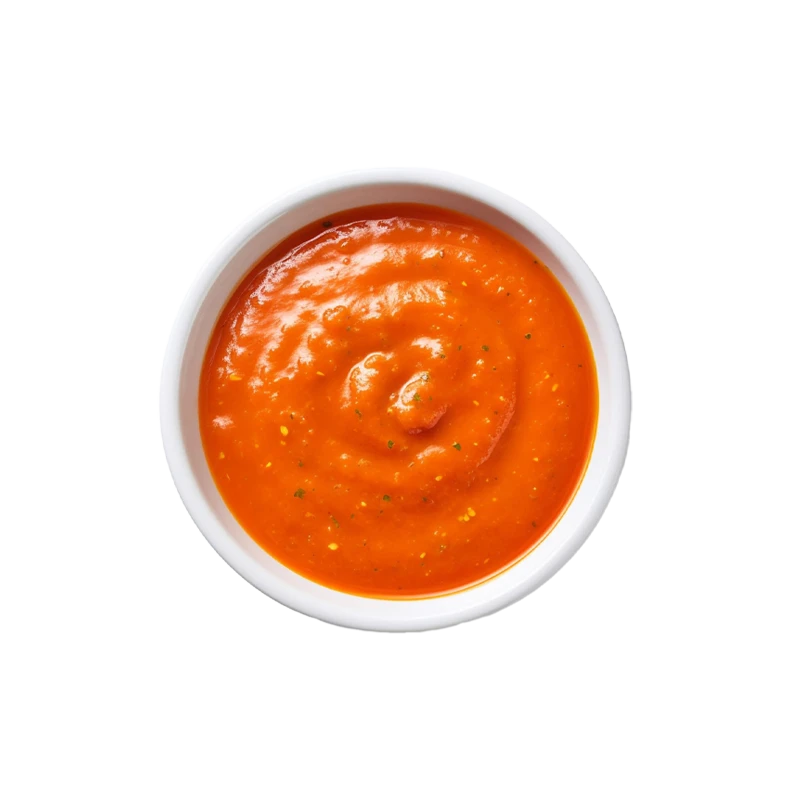French Dressing — Nutrients, Health Benefits, And Shopping Tips

Written by Listonic Team
Last update on September 3, 2024
Nutrition facts
Nutrition facts
Amount per 100 g
Calories
🔥 484 kcal
| Nutrition per: 100 g | Value | % Daily Value* |
|---|---|---|
| Carbs | 10 g | 3.64% |
| Fiber | 0 g | - |
| Sugars | 7 g | 14% |
| Glycemic Index | 35 | - |
| Protein | 1 g | 2% |
| Sodium | 1100 mg | 47.83% |
| Total Fat | 50 g | 64.1% |
*The % of Daily Value (DV) tells you how much a nutrient in a serving of food contributes to a daily diet. 2,000 calories a day is used for general nutrition advice.
35
🟢 Low Glycemic Index
Did you know?
Health benefits
- Enhances flavor of salads, making them more enjoyable and encouraging the consumption of vegetables.
- Can provide healthy fats if made with oils like olive oil, which support heart health and nutrient absorption.
- Contains essential vitamins and minerals if made with ingredients like vinegar, which provides antioxidants.
Health risks
- High fat content particularly in traditional recipes that include oils, which can contribute to increased cholesterol levels and heart disease if consumed frequently.
- High sugar content in some commercial varieties, which can contribute to weight gain, tooth decay, and increased risk of diabetes.
- High sodium content in many commercial dressings, which can contribute to hypertension and increased cardiovascular risks.
- Potential for artificial additives such as preservatives, colorings, or flavorings in some store-bought French dressings, which may cause adverse reactions in sensitive individuals.
How to choose french dressing
Quality French dressing boasts a vibrant, orange-red color and a smooth, pourable consistency. Its taste should be a balanced mix of tangy and sweet. Ensure the dressing contains real vinegar and tomato paste for the best flavor.
Avoid any dressings that separate easily or have an artificial color. Proper French dressing should coat salad greens evenly without being too watery or thick.

How to store french dressing
Refrigeration is necessary for French dressing after opening to maintain its quality. Storing it in its original bottle or transferring it to an airtight container helps keep it fresh. This way, French dressing can stay good for up to a month.
Air exposure can lead to separation and spoilage, which diminishes the dressing’s flavor. Ensuring the lid is securely fastened after each use is crucial. Keeping the bottle tightly sealed preserves the taste and prevents contamination, making it safe for extended use.
✅ Extra Tip
How long does it last?
French dressing can last for 6-9 months unopened when stored in a cool, dark place. Once opened, it should be refrigerated and used within 1-2 months.
What to do with leftovers?
Leftover French dressing can be used in a variety of culinary and non-culinary ways. In the kitchen, it’s not only a salad dressing but can also be used as a marinade for chicken, pork, or vegetables, adding a sweet and tangy flavor. French dressing can also be mixed into pasta or potato salads for added flavor or used as a glaze for roasted meats.
Beyond cooking, French dressing has some unconventional uses. It can be used as a quick polish for wooden furniture, thanks to its oil content. Simply apply a small amount to a soft cloth and buff the surface to bring out the wood’s shine. Additionally, if you’re out of more traditional products, French dressing can be used as a substitute for shaving cream; its oils can help moisturize the skin while providing a smooth surface for shaving. However, be sure to wash thoroughly afterward to remove any residue.
👨⚕️️ Medical disclaimer
Discover products from other categories
Listonic Team
Fact-checked
Our editorial team checked this article to make sure it was accurate at the time of publishing it.
Get the top-rated shopping list app on your phone!







